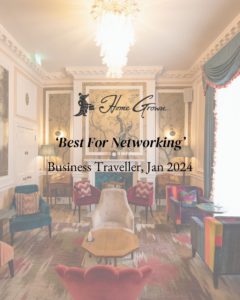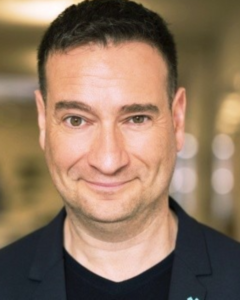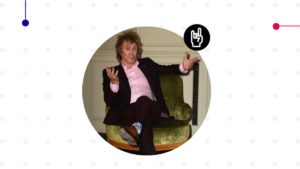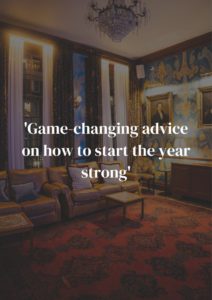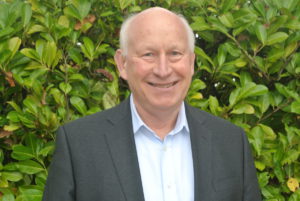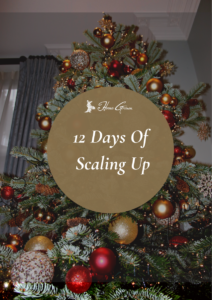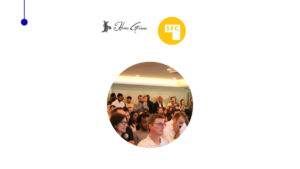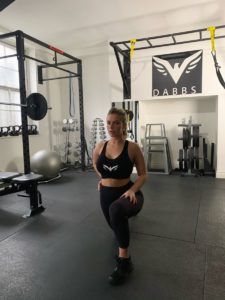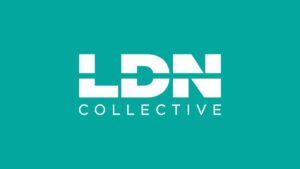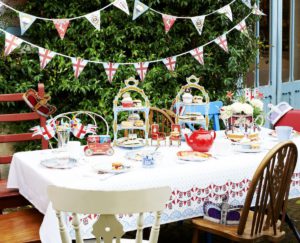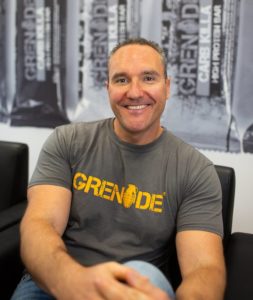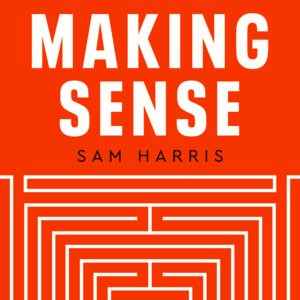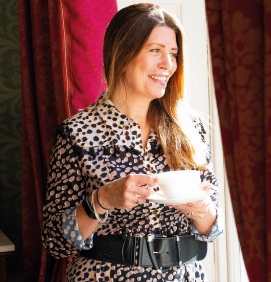Why Great Salespeople Are Great Storytellers?
and the 9 (+1) stories you must tell
I can remember the day clearly. It was warm and sunny. Twenty years ago, sitting in my office in Madrid, Spain. As I read the email, I thought, what a fantastic opportunity. I’m going to come back to head office with a whole briefcase full of orders.
You see, I was responsible for international sales for a fast-growing European tech firm, and I’d been invited to pitch to 300 CEOs in the U.S., a market we were just entering. I prepared diligently. I thought about our U.S. market, its needs and problems and how our firm can help.
I listed our features, benefits, value propositions and put together what I thought was a compelling pitch. Time flew by, and I soon found myself across the Atlantic alongside our U.S. competitors. We were in front of the assembled group of our ideal decision-makers. Ready to pitch. My turn came. I stood up and delivered my well-rehearsed pitch—a series of PowerPoint slides. After my allotted 20-minutes, I felt I’d done okay but thought I deserved something more than just a little polite clapping.
Then our main U.S. competitor stood up. I thought something had gone wrong as he didn’t have his laptop. But then he started to speak. The assembled decision-makers were spellbound for the next 20 minutes.
He didn’t have a polished PowerPoint pitch. He told a series of stories.
Stories that resonated with these ideal decision-makers.
Stories that differentiated their technology.
Stories that shared their unique insights.
Stories about how they create value for their customers. After 20-minutes, he didn’t receive a few polite claps; he received rapturous applause. Just a handful of people wanted to speak to me at the coffee break, and I stood there feeling disappointed. But it seemed that most of the room wanted to talk with my storytelling competitor.
It was this experience that taught me the power of storytelling. And over the past 20 years, I’ve focused my work on how storytelling can help realise business outcomes.
In this brief guide, I will share how you can use powerful storytelling to increase sales success.
This guide is for all those who need to sell as part of their job. The methodology works, regardless of what you are selling. From a B-2-C advisory offering, a ‘commodity product, a high-value complex product or service with multiple senior decision-makers, or you need to sell your idea to your colleagues.
The Story Selling approach can also be used in digital environments to increase sales and customer retention. As you’ll soon see, great Story Selling is at the intersection of classic Hollywood storytelling, best practice sales methods and narrative psychology.

WHY STORYTELLING BOOSTS SALES PERFORMANCE
Let’s first look at this bell curve that represents sales performance.

Red zone: This is not a good place, but it’s possible to drift down here even when selling higher-value products and services. In the red zone, relationships are more transactional and sales less predictable. Often those here are selling based on features and sometimes on price.
Amber zone: This zone represents most salespeople. They are doing all the right things based on conventional wisdom. They may have a sales process, understand the difference between features, advantages and benefits, and value propositions. Their performance is okay, but just okay.
Brown zone: In this zone, we have what I term the occasional storytellers. These salespeople use stories in the sales process, but more by chance and don’t have a defined story selling process that compliments their traditional sales approach.
Green zone: These are the Story Sellers, and their business thrives. They understand how and where to use the right story at the right time in the sales process. They have a library of stories as a resource and are adept at story listening to change their approach, and they can fluently use advanced techniques.
One of my clients, a global multinational, researched a group of their salespeople. One control group just sold using their traditional approach, and the other deployed a story selling approach. The group who used the story selling methodology closed 2 to 3 times more sales!
Just like any great story, the Story Selling approach will make your offering more memorable. Robin Dunbar, a psychologist, found that a fact wrapped in the narrative is over 20 times more memorable.
We can also look at sales performance as an iceberg. Story Sellers develop deeper relationships. They can resonate and build trust with prospects more efficiently and inspire action.

THE SCIENCE OF STORY SELLING
At the most, basic level stories are compelling because they are how we learn. Going back to cavewoman and man times, they shared traditions and knowledge through the stories they told.
Today we do the same. When my daughter was around three years old, she learnt about going to the dentist from a Dora The Explorer book we read to her. So, she walked into her first visit to the dentist with a sense of excitement.
Robin Dunbar, an anthropologist and psychologist, found the 65% of our day-to-day conversations are in the narrative. However, in business, we all too quickly switch to rational thinking. The world of facts, figures and logic, and consequently, we overlook the power of storytelling.
Stories have an almost magical power that can change minds, create a sense of empathy and transport our prospects to our desired conclusions. To understand how stories achieve this, we need to look at our brain’s neurochemicals when listening to a great story, specifically oxytocin, cortisol, dopamine and endorphins.
As you read the following, think of your favourite firm or a book that you love and how it triggers these brain chemicals. For me, it’s the latest James Bond 007 film.
- Oxytocin: This is also known as the ‘love hormone. When your story helps produce oxytocin in your prospect, it will help build a sense of empathy and trust. To induce oxytocin, you can, for example, reveal something about yourself, perhaps a time when you’ve struggled to overcome a problem or use characters in your story that are like your prospect so they can relate to them.
- Cortisol: Cortisol is generated when your prospect recognises the challenges and risks your characters face in your story. You need an attention grabber in your story, and this will help them focus. Think of the opening 10 minutes of a 007 film. Though make sure you don’t induce too much cortisol as it will be too stressful for your prospects in a sales situation.
- Transportation: A great story seller can magically transport their prospect into their story. When this happens, the cortisol that feeds our anxiety joins with the empathy of oxytocin, and the listener feels at one with the characters until your story concludes.
- Dopamine: This is released by generating suspense. It will keep your prospects intensely listening to your story, wanting to know what happens next. You’ll need a twist in your story but try not to reveal the punchline of your story until the very end and ensure it is a happy ending, so your prospects feel good, as this will make them feel good about your product or service.
- Endorphine: This chemical will help put your prospects at ease, and you can generate this feel-good hormone with humour. Self-deprecating humour is recommended, though just in the right amount.
The next time you watch a film or even an advert, think how the producers have created it to produce each brain chemical. You can do the same when Story Selling.
THE ESSENTIAL INGREDIENTS OF A GREAT STORY
For your prospects brain chemicals to start working, you need your sales stories to contain these key traits:
- Setting – where your story takes place
- A sequence of events – a recognisable order
- A central character – someone your prospect can relate to
- Emotion – think what emotions you want your story to trigger
- Unpredictability or surprise – without these, you’ll just have at best an exciting vignette
- Cliff hanger – this will keep your prospect listening intently
- Business point – clearly state this
Your stories should be 2 to 3 minutes in length. Thinking of how to structure your stories, when you read the work of Joseph Campbell and Christopher Volgar, you’ll see that Hollywood films often have 12 to 17 parts to them. But we can simplify this. The 9 (+1) stories you’ll read about a little later can all be a variation of these two themes:
Story structure 1:

Story structure 2:

THE 9 (+1) STORIES YOU MUST TELL
We can simplify the sales process:

First, you have the ENGAGE. In this stage, you must RESONATE with your prospect. By doing so you’ll build rapport and trust.
Then you need to DIFFERENTIATE so your offering is IRRESISTABLE and becomes the obvious choice.
Finally, there is the ENROL stage where you elegantly enrol your prospect to becoming a customer.
In each of these three stages, there are three types of stories you must master and tell.
The 3 ENGAGE story types:
- Why you do what you do: These stories will demonstrate your passion for your work and trust & build rapport.
- Origin story: You need to bring your business to life over and above the typical timeline of factual events you see in most company origin story’s.
- Key person stories: Perhaps the successful deployment of your product or service depends on another critical person like a technical or operations leader. You need to share their story to build trust in their capabilities.
The 3 DIFFERENTIATE story types:
- Success stories: Most firms have dull case studies that are all about showing how great they are. Success stories make your customer the hero and bring your offerings to life.
- Inoculation stories: Most potential customers think of objections as to why they shouldn’t buy. You need to use inoculation stories to help prevent these objections from surfacing.
- Insight stories: These demonstrate the unique value you deliver. It could, for example, be gleamed from original research-based thought leadership or from a survey.
The 3 ENROL story types:
- Urgency stories: Prospects can hesitate and um and ah. Urgency stories, when well told, can nudge your prospect to ‘yes’.
- Friction stories: Your prospect may be ready to commit, but there could be a nagging concern. For example, they may feel hesitant because they don’t know how to tell an existing vendor they will switch or how to work their internal politics to implement a solution. Friction stories remove these concerns.
- Value stories: These stories share what it’s like to work with you and what you do if things go wrong.
And the +1 story you must master?
Well, the +1 story are the stories you tell yourself, your personal internal narrative. Your internal narrative dictates your personal beliefs, your outlook on life and your mindset. You need your past and future narratives to be fully aligned. Your +1 story, is the most significant deciding factor on whether you’ll be a success as a salesperson.
YOUR NEXT STEP
Becoming a Master Story Seller will elevate your sales success. You’ll gain the ability to resonate better with prospects, become the obvious choice in a sea of competition and elegantly close more business. This brief guide has set out some of the main elements you need to master. However, you’ll also need to become adept at story listening, so you understand your client at a deeper level, learn how to deliver your story to engage, persuade and inspire; and become fluent in advanced storytelling techniques that will help draw your prospects closer to you.
From today, you can follow one of three possible future stories.

You could carry on as you are and hopefully move along the amber line. Sales will be okay, a little up and a little down, but you’ll likely get by with luck. However, your sales revenue could drift downwards along the red line. This drift might happen through no fault of your own. I can think of Chris (not his real name), an independent executive search consultant. When I spoke to him 18 months ago, his business was fine. But then competitors started to move into his niche, there was pressure on pricing, and slowly new business to dry up. His firm has drifted downwards.
However, the future story is quite different for those on the green line. Take, for example, Dawn (not her real name), a financial advisor I started working with a few months back. She was on the amber line when we met but wanted to do better. We worked together to develop her 9 (+1) story types; today she has multiple stories she can use for each stage of the sales process. She’s also a great story listener and can respond to prospects accordingly. Her business is on the green line and feels great for her. The closest you’ll get to the green line is today, and all it takes to move onto the green line is a decision. Think how you will feel in just a few months from today, when you know you are moving smoothly up the green line?
© Roger Jones
Related articles




A one-stop-shop for entrepreneurs and investors. What really sets Home Grown apart is their members’ events which provide access to valuable insights and support scaling founders on their growth journey.Richard Farleigh, Entrepreneur and Former BBC Dragon's Den
It’s always a delight to meet, network and entertain amidst the generally relaxed vibes that radiates throughout Home GrownGladstone Small
Home Grown is immersed with an overflowing energy, unrivalled facilities yet the club has a certain uniqueness.Luke Reed
What a special delight and home from home! I stay here whenever I come to London and their Scale-up events are on the money.John Courtney
We are all crying out for opportunities to bump into other people, to spark ideas off them that make us happier, more fulfilled and more imaginative: Home Grown is a forum for just this creative serendipity.Tas Tasgal
Home Grown is more to me than just my office in London. It’s a community. It’s a place to network with other business people. But most of all it’s got that super friendly and positive vibe that you just can’t wait to get there each time.Neil Thompson




















